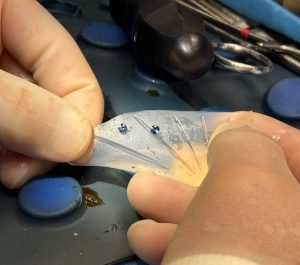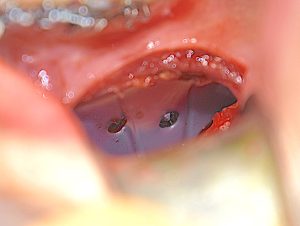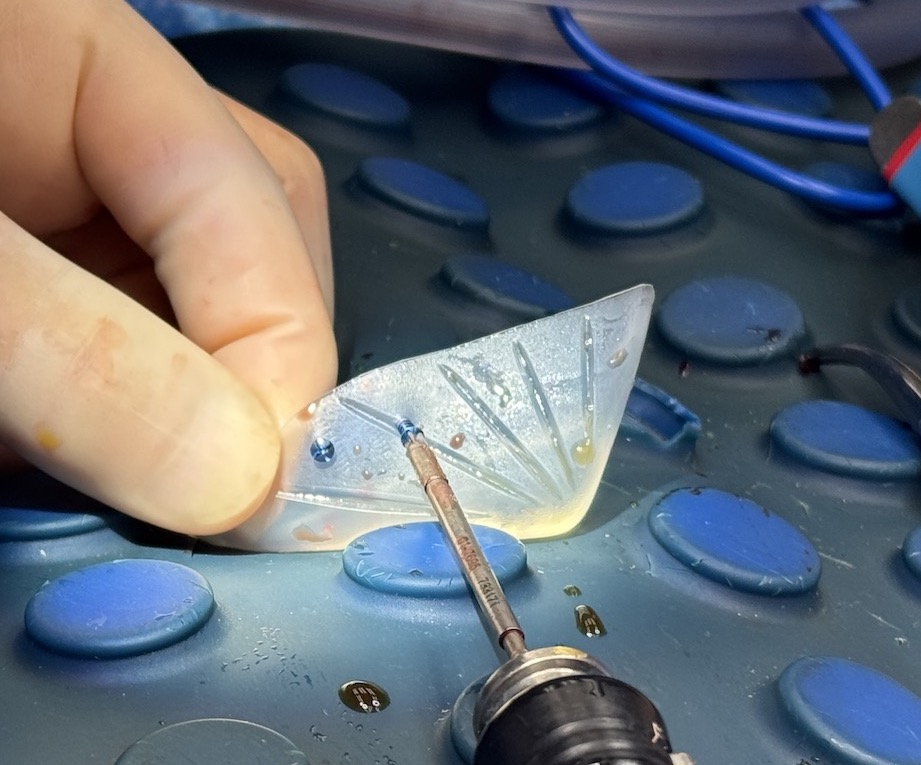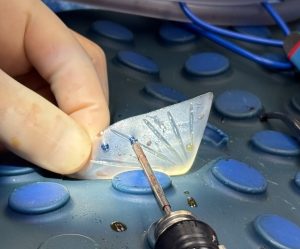Jaw angle implants are a unique and most challenging of all facial implants to surgically place. What fundamentally separates them from other implants is their posterior location at the back end of the lower jaw which is not an easy area to reach from an intraoral access. Besides the limited visibility the implant must also be placed under the masseter muscle and its ligamentous attachments, the largest and strongest muscle in the lower face.
There are many reasons why jaw angle implants aesthetically fail but one of the most common is inadequate placement.This is most commonly seen by an anterior implant positioning in front of the posterior-inferior border of the ramus. In other words not getting the implant far back enough onto and over the bony jaw angle. There are numerous techniques to avoid this intraoperatve error from proper dissection instruments to external digital palpation checks.
Because of the challenges in placement jaw angle implants are the one facial implants were screw fixation to secure its intraoperative positioning on the bone is essential. Debates can be had about whether screws are needed for chin and cheek implants, and there are certainly surgical advocates for and against their use, but in jaw angle implants there can be no debate.
Screw fixation of jaw angle implants has some similarities but many differences from how screws are placed in other types of jaw angle surgeries. (most commonly sagittal split osteotomies) Intraoral and large percutaneous cannulas are not needed as the screw holes do not require pre-drilling before screw insertion. Rather self-tapping screws are used with lengths of 7mms placed through the thinner upper flange of the implant.
A percutaneous technique is used but without a cannula. The screw driver is passed directly through the side of the face by first making a 2mm nick skin incision. The screw driver is pushed through the masseter muscle and into the opened pocket intraorally. The screw(s) are attached to the screw driver and then driven through the implant into the bone.


Dr. Barry Eppley
World-Renowned Plastic Surgeon




